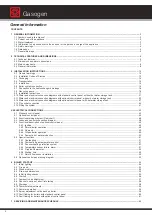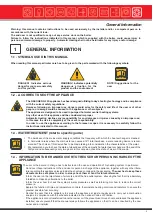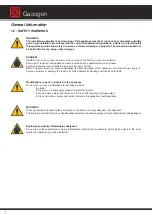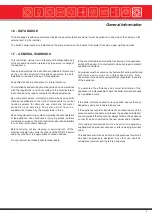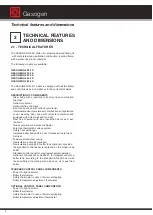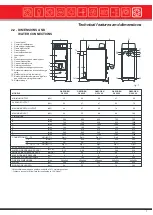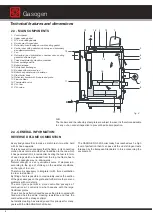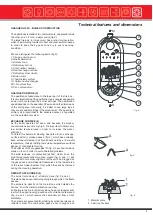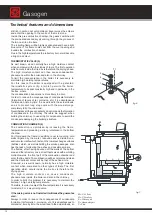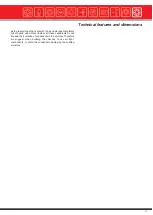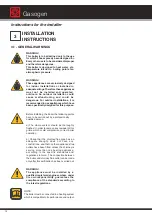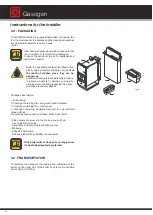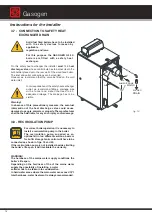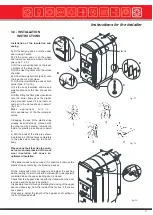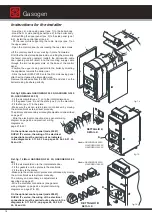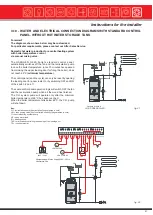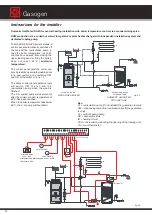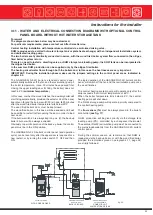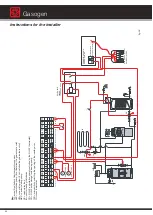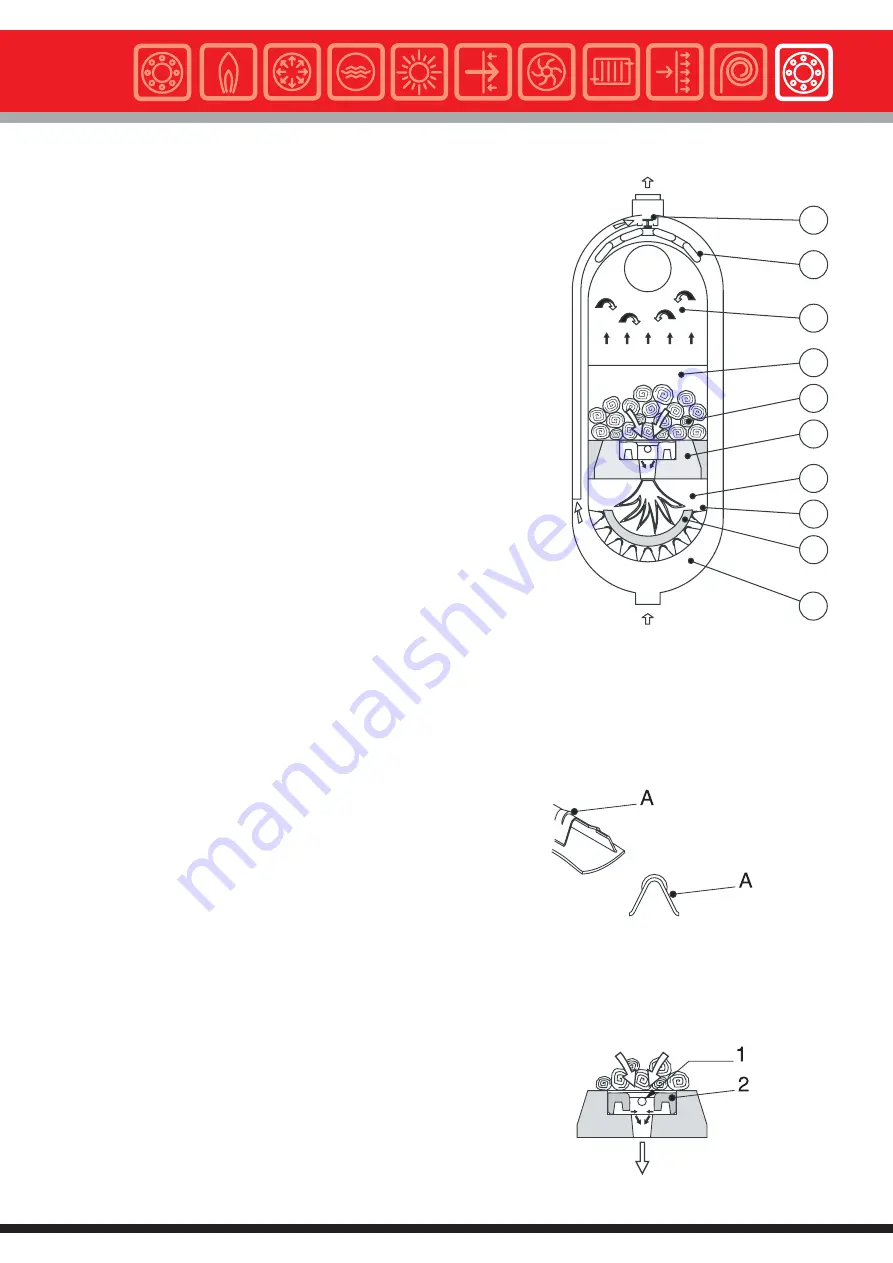
9
Technical features and dimensions
M
R
8
7
9
10
1
2
3
4
5
6
fig. 3
GASOGEN G3 2S - BOILER CONSTRUCTION
The boiler body is made of two oval elements, one placed inside
the other, so as to form a water cavity (fig.3).
The large fire box , in its rear wall, has a refractory insulation,
which is particularly resistant to heat and mechanical stresses,
in order to keep the by-pass zone dry in every working
condition.
We can distinguish the following parts (fig.3):
1. Fire box, drying area
2. Gasification zone
3. Embers zone
4. Refractory burner
5. Combustion chamber
6. Heat exchange surface
7. Refractory steel cradle
8. Boiler water
9. Thermostatic system
10. Safety heat exchanger
M C.H. system flow
R C.H. system return
GASIFICATION ZONE (2)
The gasification takes place In the lower part of the fire box .
It is very important that the gasification is as regular as possible,
so as not to overburden the burner with gas. The gasification
speed depends on the quantity of the wood and the dimensions
of the drying area. Generally, it is better to use large logs if
they are dry and small logs if the wood is wet . The quantity of
primary air, proportional to the delivered output, is regulated
via the adjustment system.
EXCHANGE SURFACE (6)
As the boiler operates on wood, and because the sulphur
concentrations are not very high , it is important to obtain very
low smoke temperatures in order to increase the water
efficiency.
To obtain this Automatic Heating has opted for an exchange
surface with dry smoke passes (fig. 4), which have already
been extensively tested in oil fired boilers working at low water
temperature, thus permitting low smoke temperatures without
danger of condensate forming.
The surfaces of the dry passages “A” (fig. 4) have had incisions
made on them in order to avoid dilatation problems.
The solid residues of combustion (ashes), which lie on the
high temperature refractory-lined cradle (fig. 3, pos. 7,) will
become with time always lighter until they will be dragged by
the gas speed and will deposit themselves in the lowest area
of the rear smoke chamber, from which they will be removed
during the cleaning operation.
REFRACTORY BURNER (4)
The burner is made up of refractory stone (fig. 3, pos. 4).
This stone has an oval central opening through which the flame
passes.
The embers lie directly on the main stone which divides the
fire box from the lower combustion chamber.
Furthermore the main refractory stone has a rectangular seat
in which the opportunely grooved cast iron fire bars are placed
(fig. 5, pos. 2), which receive the secondary air from a front
distributor.
The embers are prevented from falling by cylindrical pieces of
refractory steel. The combustion gases, poor in oxygen and
fig. 4
fig. 5
1. Metallic grate
2. Cast iron fire bars
Summary of Contents for Gasogen
Page 1: ...Wood Fired Boiler Gasogen 29 93kW Installation and Servicing Manual ...
Page 66: ...Gasogen notes ...
Page 67: ...notes ...


